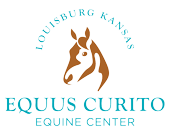After a great morning of riding training horses, I drove down to Hartman Arkansas for a Body Control Clinic. During my drive, I listened to a new podcast called Finding the Feel. (Here is the link if you want to check it out! http://www.findingthefeel.com/) This is a great podcast guys, I highly recommend it if you are into the western performance world at all.
Sedona Update 5 – 3rd Saddling
Do you remember from the last blog I talked about the single most important principle in my training program? It is teaching the horse to manage their emotions!
Definition of an Emotional Horse: A horse that is easily triggered onto adrenaline (fight or flight side of their brain) OR once triggered onto adrenaline, is difficult to calm it down and bring it off adrenaline.
Horses, just like humans, can either think or react. It is our job to not keep the horse in a bubble of comfort its whole life and avoid all of the things they don’t like – but rather to expose our horses to new environments, situations, and things to increase their emotional fitness. When done properly, this process of exposure will expand the horse’s comfort zone and actually trigger the horse to think rather than to react.
Usually the first time a horse learns to manage its emotions is during the starting process. This is why saddling and starting is such a critical point in a horse’s life.
They will either learn how to properly think through and process scary things or they will learn that their fight or flight (emotional response) is the most effective way to survive their interactions with people.
One of the most challenging aspects of becoming a horseman is to remain on the thinking side of OUR brain and not allow our emotions to be triggered when our horses experience an emotional trigger. It is our job, as the leader, to be the counterweight to our horse’s reactions and remain grounded, calm and purposeful.
My goal here in this video and after, was not to catch Sedona and “rescue” her from the situation by removing the saddle. But instead to allow her to fully explore the option of blowing up and trying to get rid of it. The fact that my cinch was good and tight is a critical success point in this session. She wasn’t able to find comfort by reacting emotionally and getting rid of the trigger. Instead the trigger (saddle) stayed consistent through the process of her blowing up and finally coming back to the thinking side of her brain and re-connecting with me.
How do you handle it when your horse experiences an emotional trigger? Do you need more tools and knowledge to manage your emotions and create a calm result with your horse? Ashley works with the public, teaching these critical horsemanship skills to build more confident and competent horse and rider teams.
Check out our sponsors!
Double C Performance Horses
Yoho Beef
